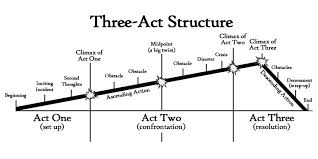Maybe it’s my engineering background that compels me to take things apart. I treat my writing no differently. Before I sat down to write my first novel, I picked out four novels in the same genre and I dissected them. I had no background in creative writing and this seemed like the best approach for me. I broke down each story into component parts: action and reaction scenes, characters, their entrances and exits, and their motivations, changes in points of view, the plots and subplots, etc. I did this chapter by chapter. I read a chapter and made my notes. When I reached the end I had a complete guide on how each book was created. I could look over my notes and see how the threads pulled together and how all the parts connected to make a seamless narrative. This exercise gave me a lot of confidence when I started outlining my novel. It forced me to think about all the components that make a good book and helped me avoid the common errors of a novice writer.
I still analyze my favorite books every time I begin a new book. I find it puts me in the mood to write my story and sharpens my mind. I use unabridged audio books now. It allows me to make notes while I listen.
Writing is an art, but it’s not all instinctual. There’s a mechanical side to good storytelling and to master it, you need to know how it works.


